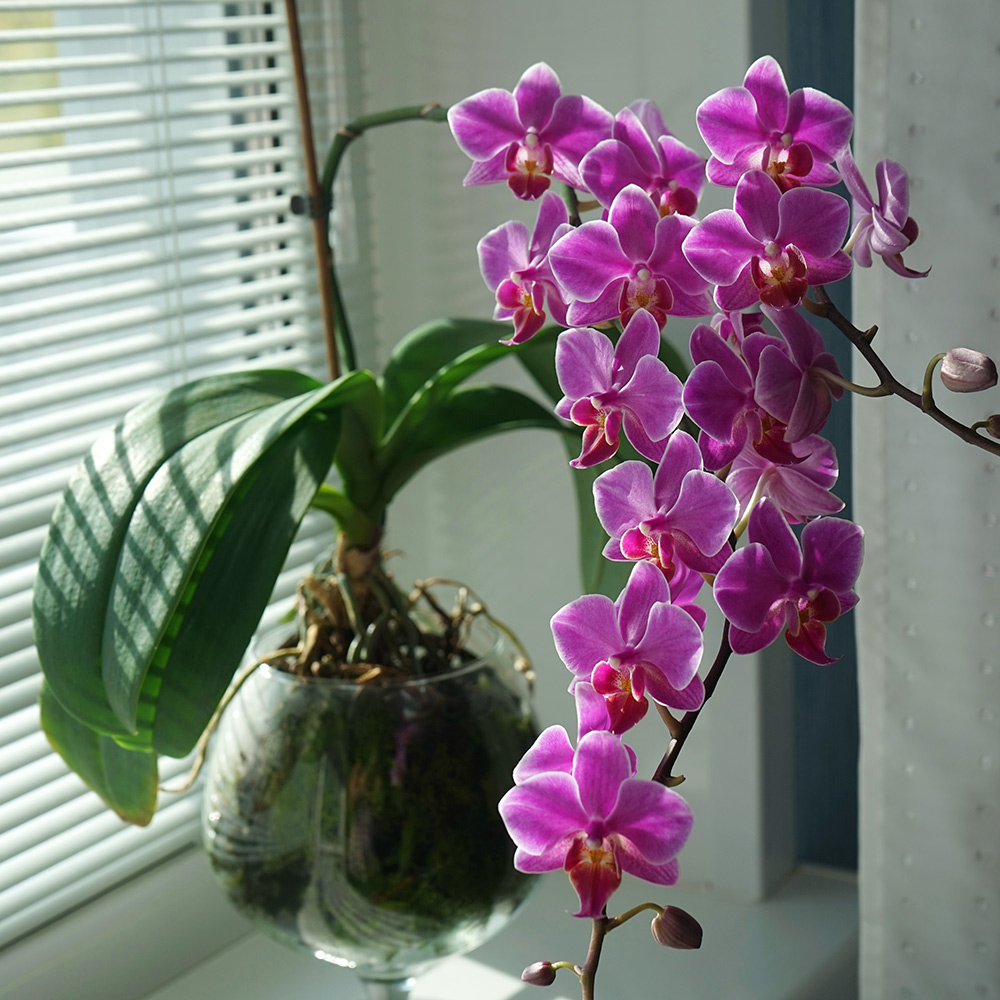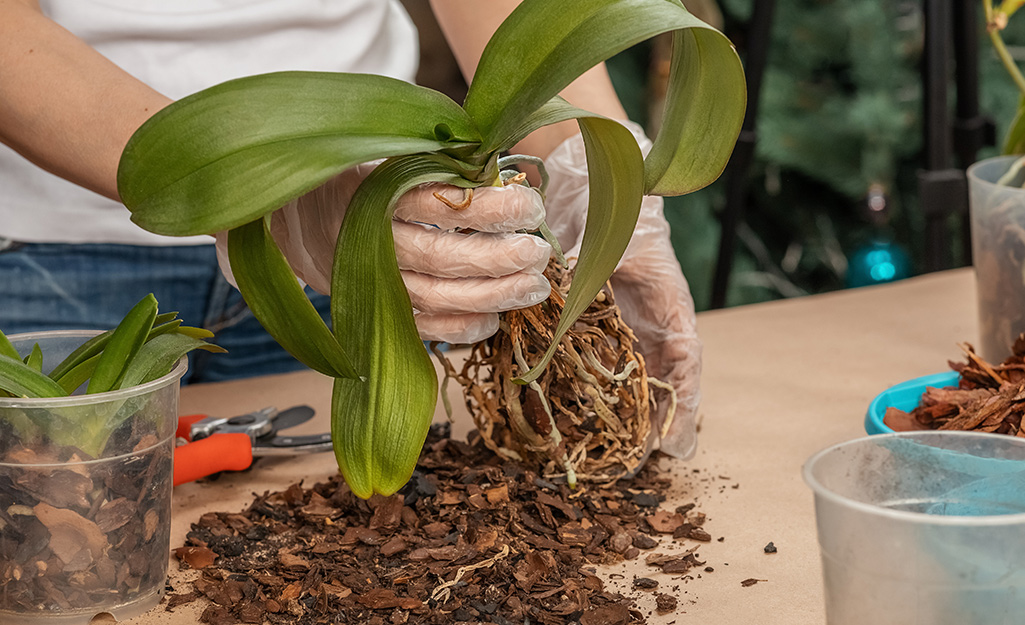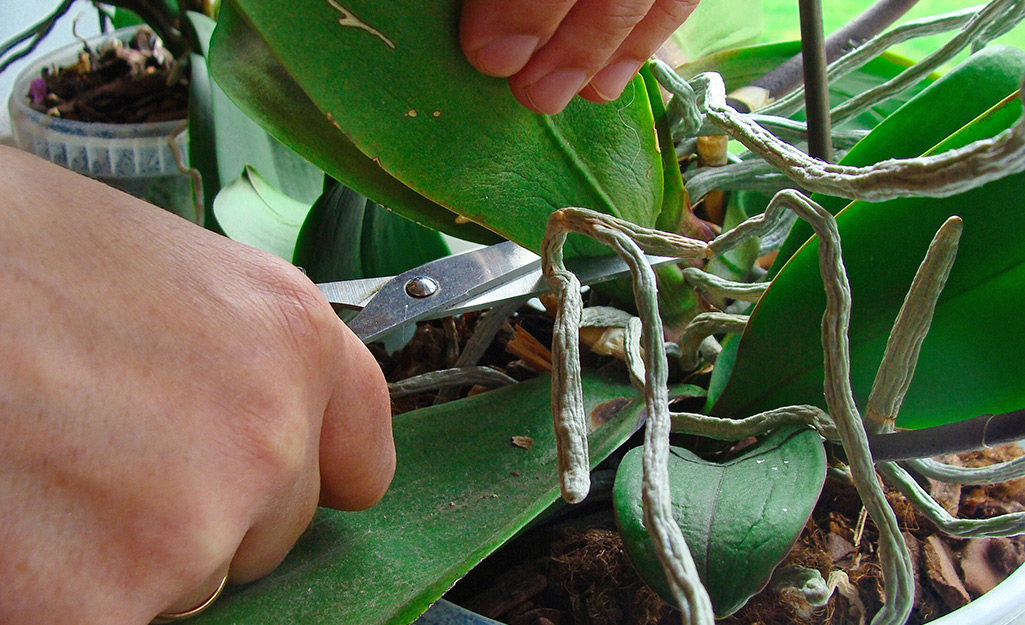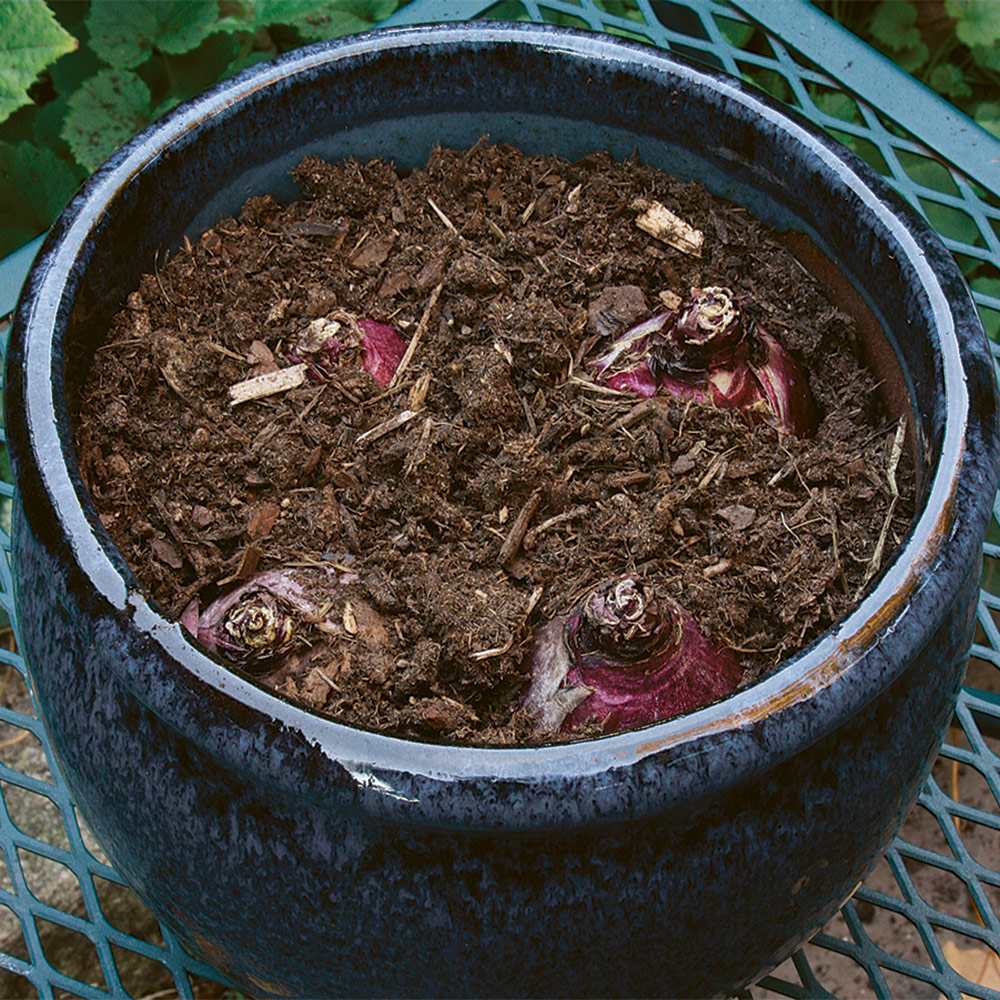
Orchids are easy. For a flower that blooms for months, these blooming machines actually need little care. The keys to orchid success are right plant, right light and consistent (not constant) care.
The hardest part of orchids is choosing which type is right for you, since they are available in a wide range of spectacular colors and exotic shapes. Moth or phalaenopsis orchids are easiest to grow at home.
Learn how to keep orchids happy and blooming for months with these tips.
How to Shop for Orchids

Of the many species of orchids, phalaenopsis, or moth orchids, are the easiest to grow as houseplants due to their reasonable sunlight demands. If you can grow African violets, then you will be successful with phalaenopsis orchids. Moth orchids have long arching sprays of flowers that stay fresh for up to several months and bloom in winter and early spring.
Another houseplant favorite is cattleya, the classic corsage orchid. Its profuse blooms emerge just once a year in spring or fall. Cattleya need about twice the amount of sunlight as moth orchids, and are perfect on sunny window sills.
Oncidium orchids are called “dancing ladies” because their blooms look like ladies in skirts. They require bright, diffuse light and temps no higher than 80 degrees Fahrenheit.
Tips for selecting orchids:
- In the Garden Center, choose a plant loaded with flower buds with only a few flowers fully opened. The rest of the buds will open at home, giving you months of color.
- Look for a plant with firm, bright green leaves. And, if you can see them, healthy roots that are not brown or shriveled.
- Don’t leave your new orchid in a hot or cold car between the store and home. A few minutes of excessive temperatures can decrease the flower show.
When You Bring Your Orchid Home

Orchids like bright, indirect light. Cool morning sun is best, so choose an east- or north-facing window, if possible. Natural light can be supplemented with grow lights, although a mix of both types is desired for optimal blooms. If the weather is snowy or icy, move orchids away from the window so they don’t catch a chill.
Orchid varieties that tolerate low indoor light conditions are oncidiums, phalaenopsis and paphiopedilums.
- In your home, place your orchid in a bright spot, but not in direct sun.
- Orchids are sensitive to cold and drafts. Keep them away from vents and outside doors.
- Feed once a month with an orchid fertilizer. Water first and follow label instructions.
- After all of the orchid flowers have withered, cut back the stem halfway. If the stem has turned brown or died, cut back to the base of the plant. This prompts the plant to flower again.
Tip: The larger the orchid plant’s leaf, the less light it needs.
How to Water Orchids

Most orchids should only be watered about once a week. Wait until the bark or moss is almost completely dry before watering. Water until it pours out from the drainage holes, then completely drain excess water. Never leave your orchid in standing water.
One easy way to water orchids is by placing ice cubes on the potting media once a week. Let dry slightly before the next watering.
How to Pot Orchids

Most orchids are planted using the double-pot system. The orchid is planted in a plastic pot with drainage holes and nested in a more decorative one, called a cachepot. No matter what kind of material you choose, it must have drainage holes.
Depending on your orchids’ health, consider repotting every one to two years. When repotting, only choose a pot that is one to two inches wider and plant in an appropriate medium.
How to Care for Orchids

- Orchids need potting material that drains quickly while still retaining moisture. Choose from an orchid potting soil mix, or a combination of bark, moss and gravel.
- Select a water soluble fertilizer designed especially for orchids. Most orchids need to be fed once every three to four weeks. After flowering, reduce watering and feeding until new leaf production begins again. Once new leaves emerge, resume the full schedule of watering and feeding.
- Orchids need humidity in the 40 to 70 percent range. This is much more humid than the average home. The humidity requirement can usually be found in a bathroom with a sunny window. You can also place orchid pots on a tray filled with rocks or gravel that is then filled with water. On the down side, humidity can lead to mildew problems, so be sure to provide plenty of air circulation. If you think orchids may be your new hobby, invest in an ultrasonic humidifier.
- Orchids have periods of dormancy that can last up to nine months. Make sure the plant is adequately fed and watered (not too much, not too little) and receiving enough sunlight. Orchids like indoor temperatures between 65 and 80 degrees Fahrenheit.
- Encourage your orchid to bloom again by moving the plant to a room with nighttime temperatures between 55 and 65 degrees Fahrenheit until a new flower spike emerges. Return the plant to its original location and continue watering regularly.
Elegant orchids add color and interest to your home and are not always the persnickety houseplants we suppose them to be. Some varieties can tolerate low indoor light and still bloom. And once you learn how to water them properly, you’ll never lose an orchid plant to root rot again.
Whether you need the right plants, pots or potting soil, The Home Depot delivers online orders when and where you need them.









